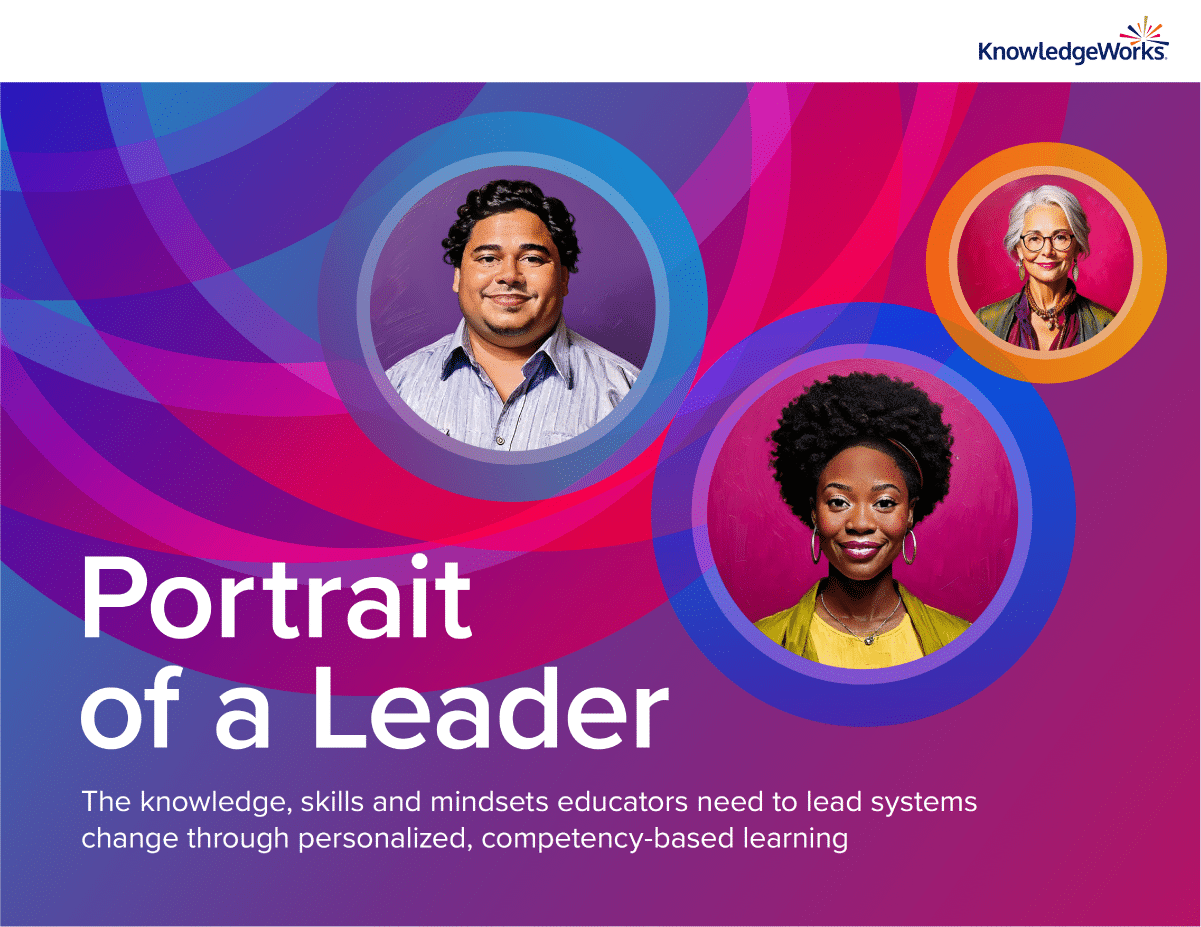Collaboration is often celebrated as a cornerstone of effective leadership and school culture. But what if collaboration isn’t the final destination? What if it’s just the beginning?
Moving from collaboration to collective efficacy is essential for transforming learning environments into personalized, competency-based systems. During a recent Lead for Learners Emerging Leaders cohort convening, attendees explored this shift through storytelling, reflection and shared protocols – unpacking what it truly means to lead with purpose.
What’s the difference between collaboration and collective efficacy?
Collaborate is one of the five attributes prioritized by educators across the country – but collaboration look different when you are leading education systems change.
“Collective efficacy is what happens when collaboration is paired with shared vision, trust and accountability,” said one cohort participant. “It’s when we stop asking, ‘What’s my role?’ and start asking, ‘What’s our impact?’”
- Collaboration is working together toward a common goal. It’s valuable, necessary and often energizing. But it can also be surface-level – limited to shared tasks or polite cooperation.
- Collective efficacy is deeper. It’s the shared belief that a group of educators can and will positively impact student outcomes. It’s not just about working together; it’s about owning the work together.
Growing and supporting emerging leaders
Through a year-long cohort facilitated by KnowledgeWorks, participants in Emerging Leaders cohorts are developing essential leadership skills for leading transformational change. Participants engage in self-reflection and personalized growth while developing five essential leadership attributes as identified in KnowledgeWorks Portrait of a Leader.
In September 2025, participants gathered in Cincinnati, Ohio, for collaboration, professional learning and connection. The convening gave participants the opportunity to practice these attributes in real time, building skills and strategies they can take back to their own schools and districts.
Emerging Leaders cohorts are just one way educators from across the country are connecting and learning through KnowledgeWorks’ national Lead for Learners network. From the free online community and monthly peer learning events to collaborative resource development and national committees, Lead for Learners connects teachers, school leaders, district administrators and instructional leaders with support as they work towards equitable, learner-centered systems change through personalized, competency-based learning.
How do you move from collaboration to collective efficacy?
Educators participating in the Emerging Leaders program, compared perspectives on what it looks like to cross the threshold from basic collaboration into collective efficacy. Key themes included:
- Trust-building: Not just saying “I trust you,” but showing it through shared decision-making and vulnerability
- Shared purpose: Re-centering around the “why” using frameworks like Simon Sinek’s Golden Circle
- Systems over individuals: Recognizing that sustainable change requires structures that persist beyond any one person
- Reflective practice: Regularly revisiting goals, values and outcomes to ensure alignment and growth
Insights from research
Educators also reflected on Jenni Donohoo’s six enabling conditions for collective efficacy:
- Advanced teacher influence: Teachers have autonomy and decision-making power
- Goal consensus: Teams agree on meaningful, reachable goals
- Knowledge of each other’s work: Teachers understand what’s happening across classrooms
- Cohesive staff: Agreement on instructional and assessment priorities
- Responsive leadership: Leaders provide resources and protect instructional time
- Effective systems of intervention: No student falls through the cracks
These conditions don’t guarantee success – but they make it far more likely.
Why does collaboration matter in a personalized, competency-based learning environment?
In a personalized, competency-based learning environment, collaboration takes on a different meaning. It’s not just about working together; it’s about building systems where students and educators co-create learning, where agency is shared and where impact is collective. When collaboration evolves into collective efficacy, learning communities become unstoppable.








